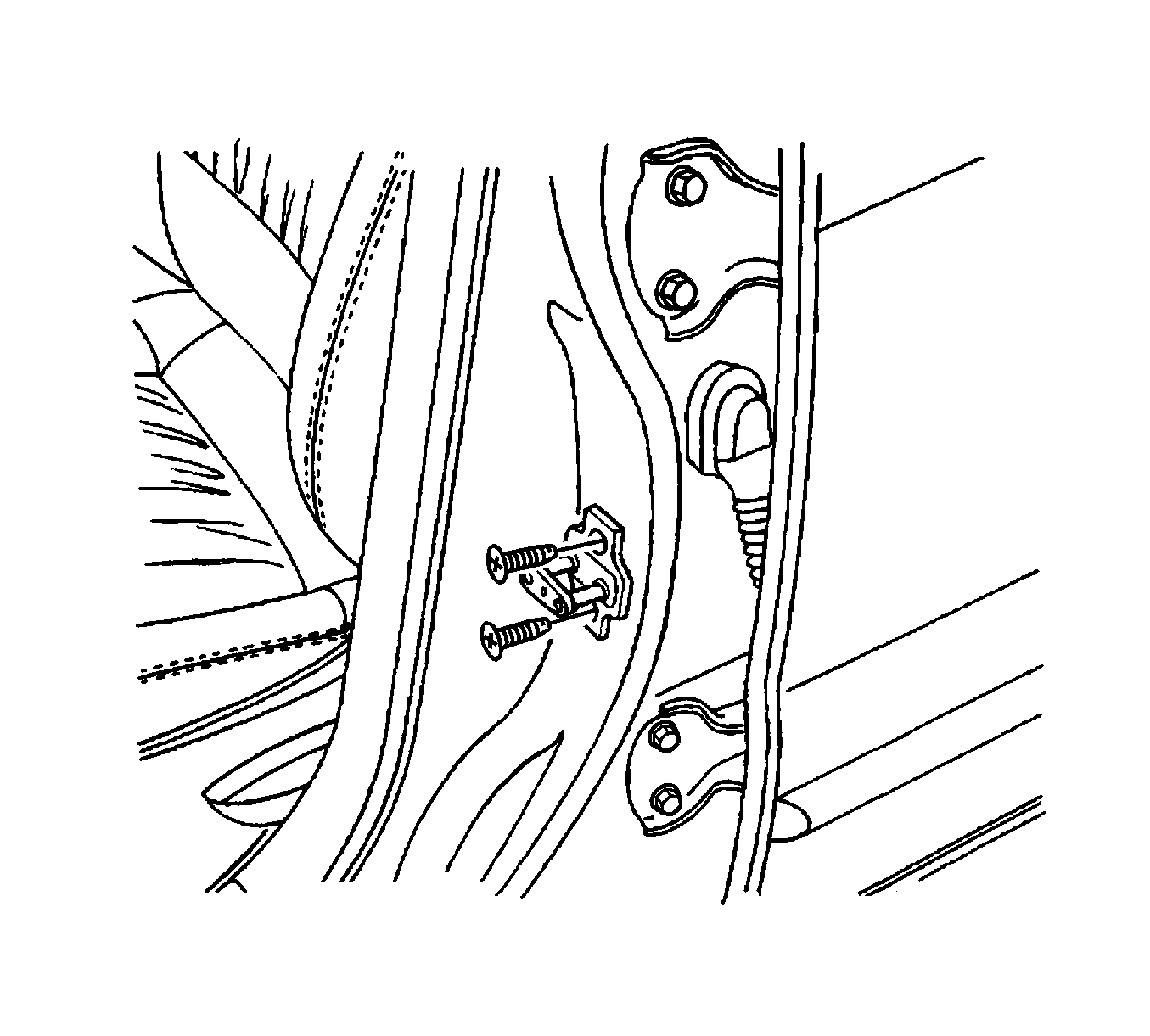The door lock striker consists of a striker with two screws that are threaded into a tapped, floating cage plate located in the appropriate body pillar. This floating cage plate allows the striker to be easily adjusted in and out or up and down.
The door is secured in the closed position when the door lock fork snaps over and engages the striker.
Caution: When replacing the door lock striker, only use the manufactures replacement part. Do not use a replacement part of a lesser quality or a substitute design. The use of a lesser quality part could lead to an improperly operating door retention system.
Up/Down or In/Out Adjustment
An adjustment of the striker in the up and down or in and out directions may be necessary for a number of reasons
| • | Vehicle frame damage as the result of a collision |
| • | Installation of new door weatherstripping |
| • | Customer complaints of excessive windnoise |
| • | Difficulty in opening or closing the door |
To adjust the door striker in an up and down or in and out direction, perform the following procedure:
- The door must be properly aligned.
- Loosen the striker screws.
- The floating cage plate can be moved slightly using the ends of the striker screws. Move the floating cage plate to the desired position
- If proper adjustment requires that the floating cage plate be moved more than is possible, use an electric hand drill and a 3/8-inch rotary file bit with a flat head to enlarge the body opening in the direction required.
- Install the door lock striker screws and tighten to 24 N·m (18 lb in).

Caution: Refer to Fastener Caution in the Preface section.
Note: It is important to use a flat-tipped drill bit to prevent damage to the tapped floating cage plate. The striker screws and the tapped floating cage plate are important attaching parts that could affect the performance of vital components and systems.
